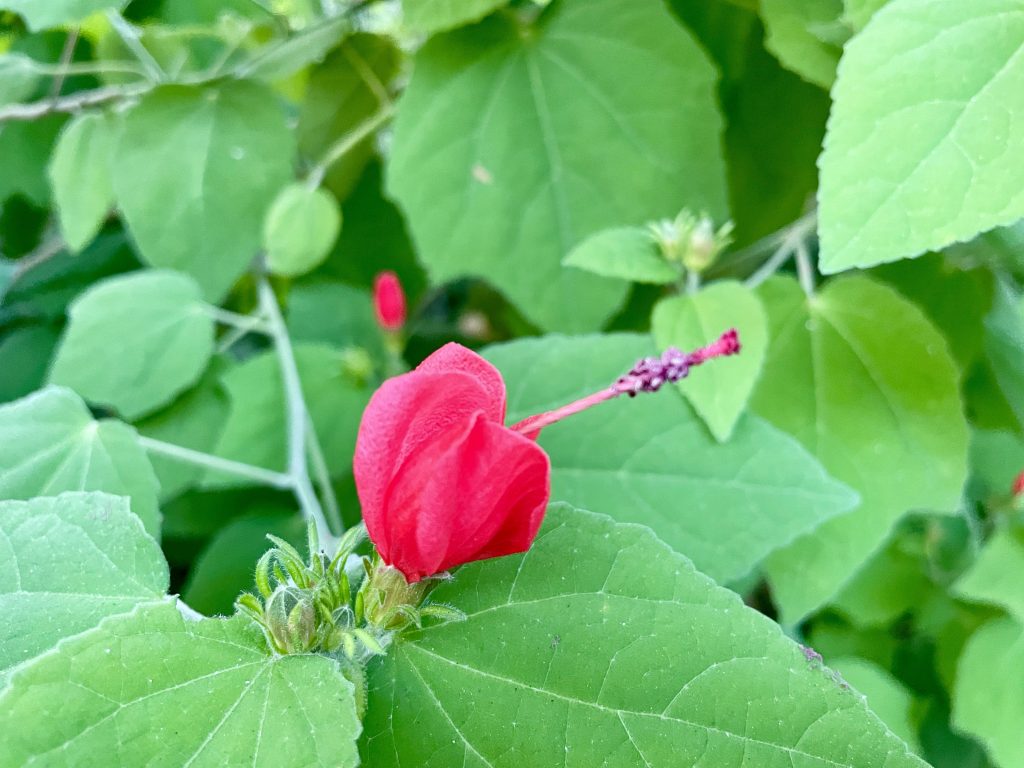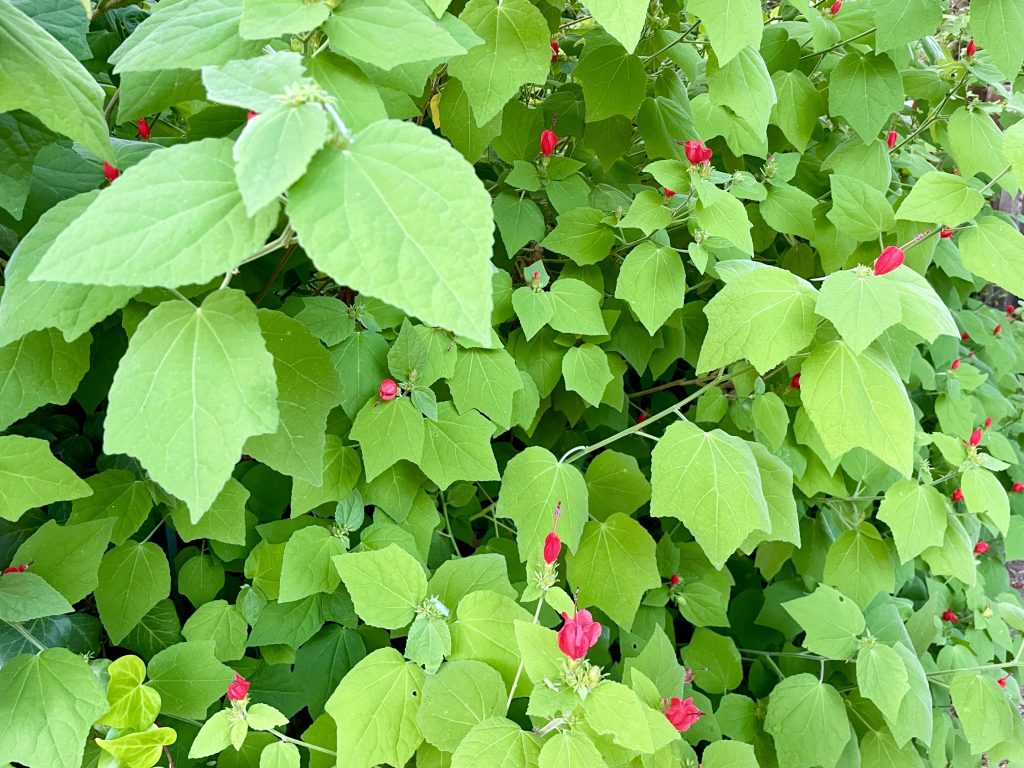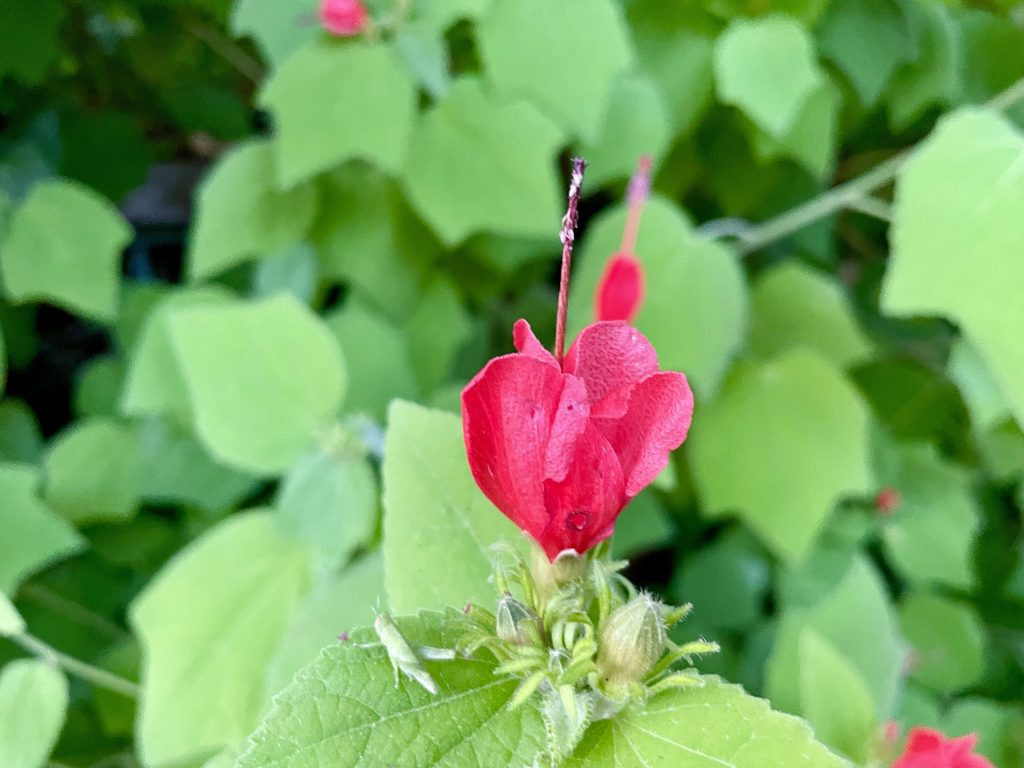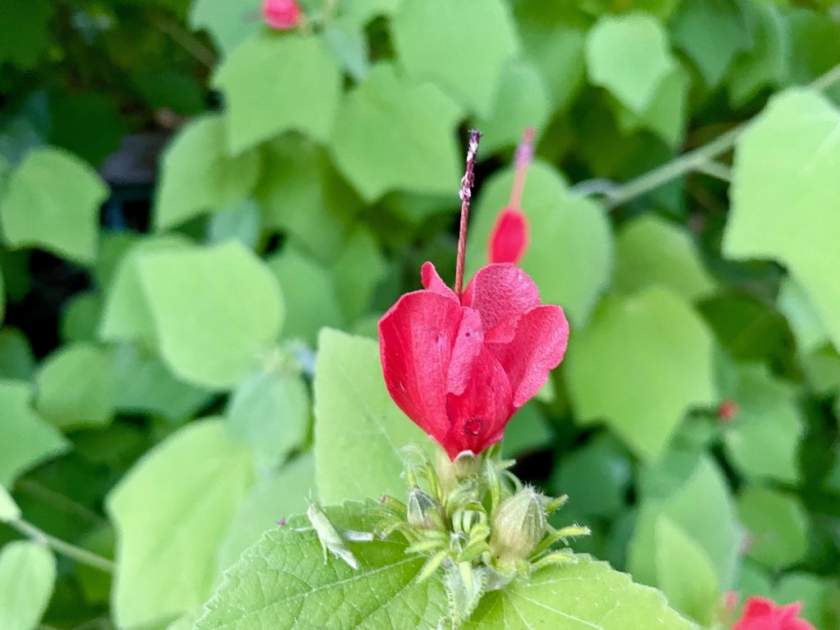Malvaviscus arboreus is a shrub from the Malvaceae or Hibiscus family of plants. It is native to Central America, Mexico, and the Southern States of the United States of America.

They also call it the Wax Mallow, Turk’s Tuban, Turk Cap, Sleeping Hibiscus, Drummond’s Wax Mallow, Mexican Apple, Bleeding Hearts, Manzanilla, Red Mallow, Texas Mallow, Ladie’s Teardrop, or Scotchman’s Purse. The name is Latin. “Malva” means mallow and “viscidus” means sticky referring to the sap. Arboreus refers to tree-like growth.
Malvaviscus arboreus grows to about 6ft or 1.8m. The foliage is dark green and 3-lobed. It flowers in summer and autumn, starting in July and continuing into October. The flowers are red, hibiscus-like, and have five petals. The petals usually swirl around the pistil and the stamens. They attract butterflies and hummingbirds. The fruits turn into red fruit that is edible.

How to grow Malvaviscus arboreus:
When it comes to growing and maintaining Malvaviscus arboreus, also known as Turk’s Cap or Wax Mallow, there are several key factors to consider to ensure its successful cultivation:
Sun and Shade: Malvaviscus arboreus thrives in locations that receive full sun to partial shade. While it can tolerate some shade, providing ample sunlight encourages optimal growth and abundant flowering.
Wind Protection: Due to its delicate nature, it is advisable to plant Malvaviscus arboreus in an area sheltered from strong winds. This will prevent the plant from experiencing damage or breakage.
Soil Requirements: Prepare the planting area with rich, fertile soil that is well-drained to support healthy growth. Incorporating organic matter, such as compost, into the soil prior to planting can improve its overall quality and drainage.
Moisture and Drought Tolerance: Malvaviscus arboreus prefers consistently moist soil but can tolerate periods of drought once it becomes established. It is important to water the plant regularly, especially during dry spells, to keep the soil evenly moist. Applying a layer of mulch around the base of the plant can help retain moisture and regulate soil temperature.
Pruning: After the flowering season is over, pruning can be done to shape the plant and promote new growth. Trim back any dead or damaged branches, and remove spent flowers to encourage continuous blooming. This practice also helps maintain a neat and tidy appearance.

In addition to these care guidelines, it is worth noting that Malvaviscus arboreus is generally a low-maintenance plant. However, regular monitoring for any signs of pests or diseases is recommended. Keep an eye out for common issues such as aphids or powdery mildew. If necessary, take appropriate measures such as using organic pest control methods or applying suitable fungicides to protect the plant’s health.
By providing the appropriate growing conditions, regular watering, occasional pruning, and vigilant monitoring, you can enjoy the beauty and resilience of Malvaviscus arboreus in your garden. Its attractive flowers and tolerance to varying environmental conditions make it a delightful addition to landscapes, attracting hummingbirds and other pollinators while adding a touch of vibrant color.




